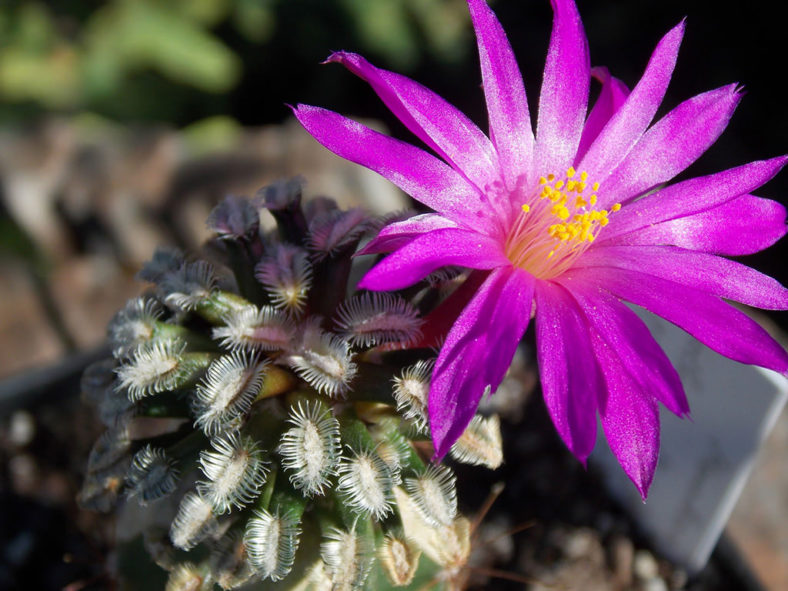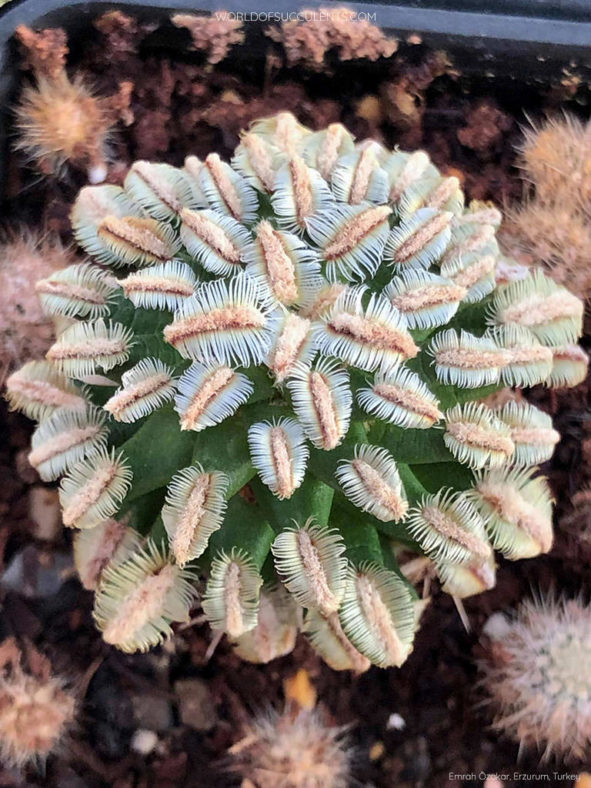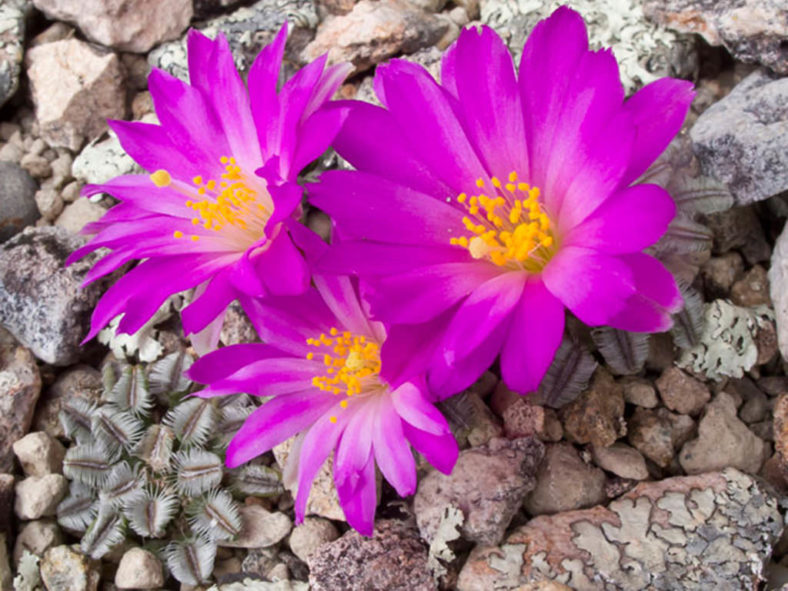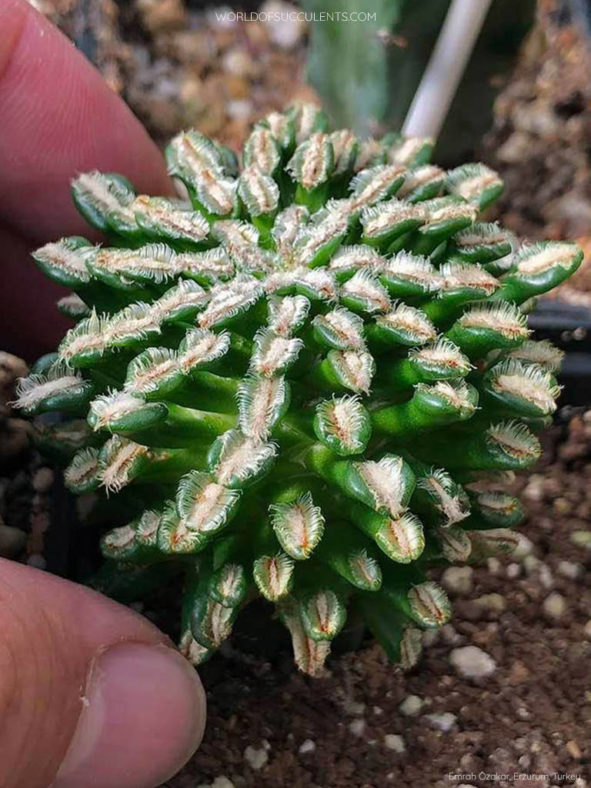Scientific Name
Mammillaria bertholdii Linzen
Scientific Classification
Family: Cactaceae
Subfamily: Cactoideae
Tribe: Cacteae
Subtribe: Cactinae
Genus: Mammillaria
Etymology
The specific epithet "bertholdii (berth-OLD-ee-eye)" honors Andreas Berthold, who found this species during his trip to Mexico in 2013.
Origin
Mammillaria bertholdii is native to Mexico. It grows on the top of low hills, usually on steep slopes in Miahuatlán de Porfirio Díaz in Oaxaca.
Description
Mammillaria bertholdii is a sensational small cactus with spherical stems with slender tubercles and strongly elongated areoles with peculiar spines at the tip of the tubercles. The stems are flattened at the apex and can grow up to 1.2 inches (3 cm) in diameter, usually solitary or several in a group. The tubercles are cylindrical to conical, measuring up to 0.3 inches (0.75 cm) long and about 0.1 inches (0.25 cm) in diameter. Each areole bears 25 to 35 pectinate, bristle-like spines, which are cream-colored, dark reddish at the base, and can grow 0.1 inches (0.25 cm) long.
The flowers are funnel-shaped, pink to pink-purple, and appear in spring. They can reach up to 1.3 inches (3.3 cm) in length and diameter. Mammillaria bertholdii is one of the few cryptocarpic cacti, which means the fruits are produced and retained inside the stem.
The growth habit and slender tubercles of this species have a certain similarity with Mammillaria luethyi, Mammillaria hernandezii, and Mammillaria saboae. The peculiar spines are reminiscent of Mammillaria pectinifera and Pelecyphora aselliformis. Mammillaria bertholdii is almost always offered as a grafted plant.

How to Grow and Care for Mammillaria bertholdii
Light: Plant this cactus in an area of your garden that receives 4 hours of direct sunlight daily. If you are growing M. bertholdii indoors, place it near the brightest window in your home or office to ensure your cactus gets enough light. Place the pot on the balcony or in the garden for extra light from spring to fall if possible.
Soil: M. bertholdii requires a soil mix that provides root aeration and good drainage, whether grown outdoors or indoors. Use a commercial cactus potting mix, or create your own.
Hardiness: This cactus is heat tolerant but not a cold-hardy plant. M. bertholdii can withstand temperatures as low as 25 to 50 °F (-3.9 to 10 °C), USDA hardiness zones 9b to 11b.
Watering: From spring to fall, water deeply and wait for the soil to dry out before watering again. Never let the pot sit in water. Suspend watering in the winter.
Fertilizing: M. bertholdii can benefit from fertilizing during the growing season. Apply a water-soluble fertilizer for cacti and other succulents. Suspend feeding during the winter when the plant goes dormant.
Repotting: Repot every two or three years into a slightly larger pot. The best time to repot your M. bertholdii is late winter or early spring, but the repotting process can be done almost any time of the year.
Propagation: There are two easy ways to propagate M. bertholdii: by seeds or by dividing offsets. The best time to remove offsets is in spring and summer. Sow the seeds in late spring or summer.
Learn more at How to Grow and Care for Mammillaria.
Toxicity of Mammillaria bertholdii
M. bertholdii is considered non-toxic to both humans and pets.
Links
- Back to genus Mammillaria
- Succupedia: Browse succulents by Scientific Name, Common Name, Genus, Family, USDA Hardiness Zone, Origin, or cacti by Genus
Photo Gallery
Click on a photo to see a larger version.


